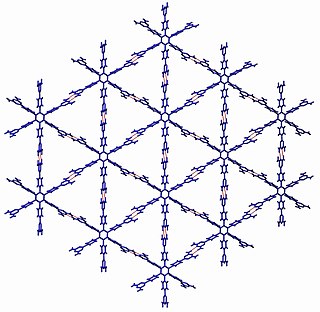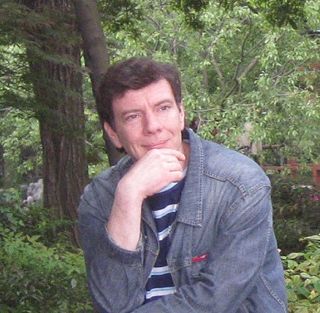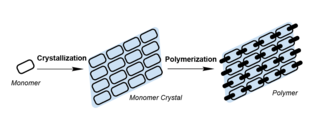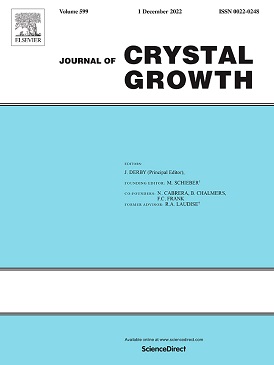
CAS is a division of the American Chemical Society. It is a source of chemical information. CAS is located in Columbus, Ohio, United States.

Advances in Physics is a bimonthly scientific journal published by Taylor & Francis that was established in 1952. The journal is also issued as a supplement to the Philosophical Magazine. Peer review is determined on a case-by-case basis. The editors-in-chief are Paolo Radaelli and Joerg Schmalian.

Nature Materials is a peer-reviewed scientific journal published by Nature Publishing Group. It was launched in September 2002. Vincent Dusastre is the launching and current chief editor.
Aluminium phosphate is a chemical compound. In nature it occurs as the mineral berlinite. Many synthetic forms of aluminium phosphate are known. They have framework structures similar to zeolites and some are used as catalysts, ion-exchangers or molecular sieves. Commercial aluminium phosphate gel is available.

Hexanitrohexaazaisowurtzitane, also called HNIW and CL-20, is a polycyclic nitroamine explosive with the formula C6H6N12O12. In the 1980s, CL-20 was developed by the China Lake facility, primarily to be used in propellants. It has a better oxidizer-to-fuel ratio than conventional HMX or RDX. It releases 20% more energy than traditional HMX-based propellants, and is widely superior to conventional high-energy propellants and explosives.

Crystal engineering studies the design and synthesis of solid-state structures with desired properties through deliberate control of intermolecular interactions. It is an interdisciplinary academic field, bridging solid-state and supramolecular chemistry.

Advanced Functional Materials is a peer-reviewed scientific journal, published by Wiley-VCH. Established in February 2001, the journal began to publish monthly in 2002 and moved to 18/year in 2006, biweekly in 2008, and weekly in 2013.

CrystEngComm is a peer-reviewed online-only scientific journal publishing original research and review articles on all aspects of crystal engineering including properties, polymorphism, target materials, and crystalline nanomaterials. It is published biweekly by the Royal Society of Chemistry and the editor-in-chief is Pierangelo Metrangolo. According to the Journal Citation Reports, the journal has a 2021 impact factor of 3.756. CrystEngComm has a close association with the virtual web community, CrystEngCommunity.
A halogen bond occurs when there is evidence of a net attractive interaction between an electrophilic region associated with a halogen atom in a molecular entity and a nucleophilic region in another, or the same, molecular entity. Like a hydrogen bond, the result is not a formal chemical bond, but rather a strong electrostatic attraction. Mathematically, the interaction can be decomposed in two terms: one describing an electrostatic, orbital-mixing charge-transfer and another describing electron-cloud dispersion. Halogen bonds find application in supramolecular chemistry; drug design and biochemistry; crystal engineering and liquid crystals; and organic catalysis.

Acta Biochimica et Biophysica Sinica (ABBS) is a peer-reviewed, scientific journal, which publishes original research articles, short communications, and reviews in the fields of biochemistry and biophysics. Established in 1958, the journal is sponsored by the Institute of Biochemistry and Cell Biology, an institute of the Chinese Academy of Sciences, and is published monthly by Oxford Journals and was published by Blackwell Publishing prior to January 2009.
In materials science, cocrystals are "solids that are crystalline, single-phase materials composed of two or more different molecular or ionic compounds generally in a stoichiometric ratio which are neither solvates nor simple salts." A broader definition is that cocrystals "consist of two or more components that form a unique crystalline structure having unique properties." Several subclassifications of cocrystals exist.

The American Journal of Clinical Oncology is a bimonthly, peer-reviewed, scientific, oncology journal, published by Lippincott Williams & Wilkins. The editor in chief is David E. Wazer. The journal was formerly entitled Cancer Clinical Trials.
Adam J. Matzger, a researcher in polymers and crystals, is the Charles G. Overberger Collegiate Professor of Chemistry at the University of Michigan, and an associate editor for the American Chemical Society's journal Crystal Growth & Design.
Giuseppe Resnati is an Italian chemist with interests in supramolecular chemistry and fluorine chemistry. He has a particular focus on self-assembly processes driven by halogen bonds and chalcogen bonds.

Zeitschrift für Kristallographie – New Crystal Structures is a bimonthly peer-reviewed scientific journal published in English. Its first issue was published in December 1997 and bore the subtitle "International journal for structural, physical, and chemical aspects of crystalline materials." Created as a spin-off of Zeitschrift für Kristallographie for reporting novel and refined crystal structures, it began at volume 212 in order to remain aligned with the numbering of the parent journal. Paul von Groth, Professor of Mineralogy at the University of Strasbourg, established Zeitschrift für Krystallographie und Mineralogie in 1877; after several name changes, the journal adopted its present name, Zeitschrift für Kristallographie – Crystalline Materials, in 2010.

Vladimir G. Dubrovskii is the head of Laboratory of physics of nanostructures at St. Petersburg Academic University, a leading research scientist at Ioffe Institute, and a professor at St. Petersburg State University and ITMO University.
Tomislav Friščić holds the Leverhulme International Professorship and Chair in Green and Sustainable chemistry at the University of Birmingham. His research focus is at the interface of green chemistry and materials science, developing solvent-free chemistry and mechanochemistry for the cleaner, efficient synthesis of molecules and materials, including organic solids such as pharmaceutical cocrystals, coordination polymers and Metal-Organic Frameworks (MOFs), and a wide range of organic targets such as active pharmaceutical ingredients. He is a Fellow of the Royal Society of Chemistry (RSC), member of the College of New Scholars, Artists and Scientists of the Royal Society of Canada and a corresponding member of the Croatian Academy of Sciences and Arts. He has served on the Editorial Board of CrystEngComm, the Early Career Board of the ACS journal ACS Sustainable Chemistry & Engineering, and was as an Associate Editor for the journal Molecular Crystals & Liquid Crystals as well as for the journal Synthesis. He was a Topic Editor and Social Media Editor, and is currently a member of the Editorial Advisory Board of the journal Crystal Growth & Design published by the American Chemical Society (ACS). He famously has a dog named Zizi.

Topochemical polymerization is a polymerization method performed by monomers aligned in the crystal state. In this process, the monomers are crystallised and polymerised under external stimuli such as heat, light, or pressure. Compared to traditional polymerisation, the movement of monomers was confined by the crystal lattice in topochemical polymerisation, giving rise to polymers with high crystallinity, tactility, and purity. Topochemical polymerisation can also be used to synthesise unique polymers such as polydiacetylene that are otherwise hard to prepare.

5-Methyl-2-[(2-nitrophenyl)amino]-3-thiophenecarbonitrile, also known as ROY (red-orange-yellow), is an organic compound which is a chemical intermediate to the drug olanzapine. It has been the subject of intensive study because it can exist in multiple well-characterised crystalline polymorphic forms.

The Journal of Crystal Growth is a semi-monthly peer-reviewed scientific journal covering experimental and theoretical studies of crystal growth and its applications. It is published by Elsevier and the editor-in-chief is J. Derby.














